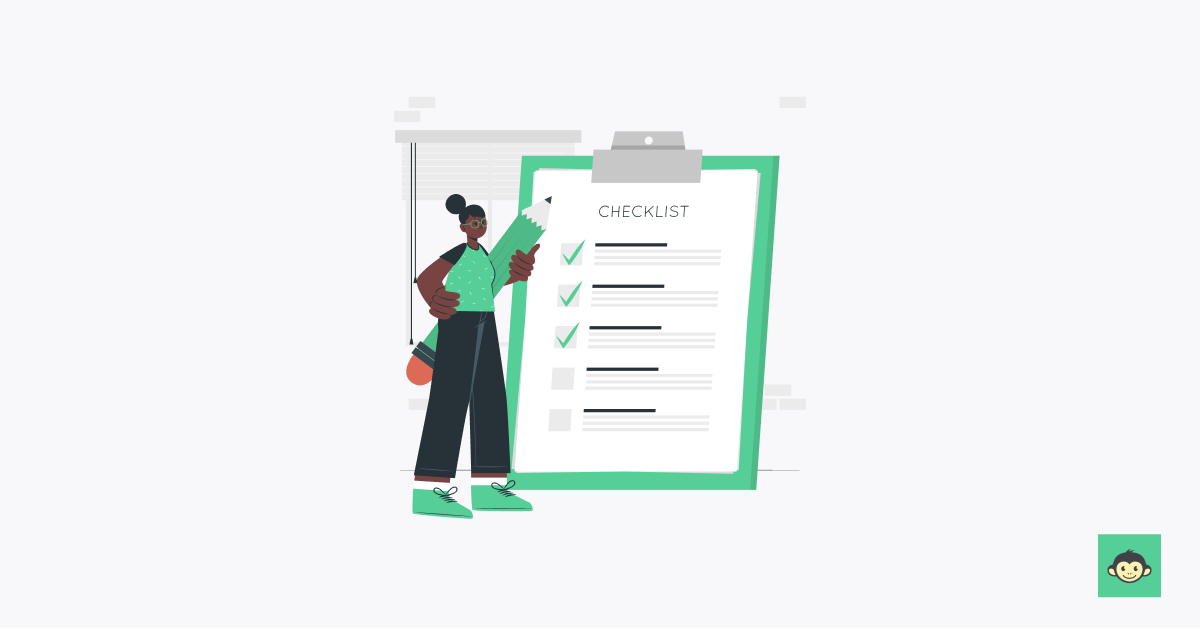How to approach exit interview data analysis for your organization in 2024?

As the business world hurtles into the future, it's time for organizations to bid farewell to outdated practices and embrace data-driven decision-making with open arms.
Exit interview data analysis is your backstage pass to understanding what makes employees leave, and it's more vital than ever. Did you know that most organizations now believe that analyzing exit interview data is a high priority?
But here's the kicker – knowing the importance isn't enough; you've got to know how to do it right! So, fasten your seatbelts and get ready to dive into the intriguing world of exit interview data analysis in 2024. It's not just a new year; it's going to be a new era!
What is an exit interview?

An exit interview is a structured conversation or survey conducted between an employee who is leaving a company and a representative from the HR department or management. The primary purpose of an exit interview is to gain insights into the departing employee's experiences, reasons for leaving, and suggestions for improving the organization.
This process helps employers identify areas for enhancement, understand the factors contributing to employee turnover, and make necessary adjustments to retain and attract talent.
Exit interviews can provide valuable feedback, shedding light on workplace culture, management effectiveness, job training, compensation, and overall job satisfaction, enabling organizations to make data-driven decisions to enhance their work environment.
How to approach the exit interview process?

Approaching the exit interview process is essential to gather valuable feedback from departing employees. Here are five steps to do it effectively:
Plan and prepare
Before the exit interview, prepare a structured list of questions that cover various aspects of the outgoing employee's experience, such as reasons for leaving, job satisfaction, workplace culture, and suggestions for improvement. This will help ensure you get comprehensive feedback.
Choose the right timing
Schedule the exit interview for the new job at a time that is convenient for the departing employee, ideally during their notice period. This shows respect for their time and allows them to reflect on their experience.
Create a comfortable environment
Interview in a private, confidential setting. Make the departing employee feel at ease, assuring them that exit interviews serve their feedback will remain anonymous. This encourages honest and open communication.
Active listening
During the interview, listen actively and avoid interrupting. Encourage the former employee to share their thoughts, concerns, and suggestions freely. Take notes and ask follow-up questions to gain a deeper understanding of their perspective.
Follow-up and action
After the exit interview, analyze the feedback to identify trends and areas for improvement. Use this feedback constructively to make necessary changes in the organization. Ensure departing employees know their feedback is valued and that it contributes to positive changes.
Approaching exit interviews with a thoughtful and respectful process benefits both the departing employee and the organization. It provides insights that can lead to a better workplace and helps maintain positive relationships with former employees, even after they've left the company.
Why is conducting exit interviews important in the first place?

While the reasons for conducting exit interviews are typically seen as serious and practical, infusing a bit of quirkiness and humor can make the process more engaging and memorable.
These unusual perspectives add a touch of fun to a traditionally formal process, potentially making it less daunting for both employees and HR teams.
Unearth the "Office Detective": Departing employees often reveal workplace mysteries they've kept secret. Ever wondered who's been stealing your lunch from the fridge? Exit interviews can expose the office detective.
Say goodbye to the 'Ghost' employee: Sometimes, you didn't even know an employee was there until they left. Exit interviews provide the chance to say goodbye to your friendly neighborhood invisible worker.
Discover hidden talents: Exit interviews might unveil hidden talents your employees possessed but never used in their roles. Perhaps the quiet accountant is an excellent stand-up comedian waiting to be discovered.
Breakup revelations: Similar to a dramatic breakup, exit interviews can bring out surprising confessions. Maybe they've been secretly hating the office plants all along.
Office gossip confessionals: Employees spill the beans on who's dating whom, office rivalries, and other juicy tidbits. Exit interviews turn into mini-confessionals.
The "What-If" scenario: Departing employees often share their "what if" scenarios. What if they had their parking spot or unlimited office snacks? These insights can lead to hilarious "what if" parties.
Collect unconventional resignation letters: Some resignations come in creative forms – poems, songs, or even interpretive dances. Exit interviews let you collect these rare gems.
Employee satisfaction ratings: Use exit interviews to invent creative ways of measuring employee satisfaction. How about a "Satisfaction-o-Meter" ranging from "Unicorn Happy" to "Zombie Apocalypse"?
Host a farewell extravaganza: Turn exit interviews into farewell extravaganzas, complete with confetti canons, live music, and celebrity guest appearances. Celebrate their departure like a blockbuster movie premiere.
"Retire" your departing employees: Treat exiting employees as if they're retiring, complete with golden watches, proclamations of eternal admiration, and plans for their inevitable comeback.
What is exit interview data analysis?

Exit interview data analysis is the process of systematically reviewing and interpreting the information gathered during exit interviews with departing employees.
This analysis aims to extract valuable insights, patterns, and trends from the data to understand why employees are leaving, identify areas of improvement within the organization, and inform strategic decision-making. Here's a more detailed explanation:
- Data collection: Exit interviews are typically conducted with departing employees to gather feedback on their experiences within the organization. This feedback can include reasons for leaving, job satisfaction, relationships with colleagues and managers, and suggestions for improvement.
- Data compilation: After conducting exit interviews, the collected data, which may include survey responses, written feedback, and recorded interviews, is compiled into a structured format for analysis.
- Identifying trends: The data analysis process involves identifying common themes and trends within the feedback. This could include recognizing patterns related to the reasons for leaving, such as insufficient career development opportunities, inadequate compensation, or management issues.
- Quantitative analysis: Some aspects of exit interview data, like multiple-choice survey questions, can be quantitatively analyzed. This might involve calculating percentages or averages to understand the prevalence of specific issues.
- Qualitative analysis: Much of the data collected during exit interviews is qualitative, such as open-ended comments. Qualitative analysis involves categorizing and summarizing these responses to extract meaningful insights. Natural language processing (NLP) tools can be helpful in this process.
- Root cause analysis: Beyond identifying surface-level issues, exit interview data analysis delves into root causes. For example, if a common theme is "lack of career growth," the analysis might explore why employees feel this way, whether it's due to limited opportunities, lack of mentorship, or other factors.
- Reporting and recommendations: The findings from exit interview data analysis are typically compiled into a report. This report can include recommendations for addressing the identified issues, improving employee retention, and enhancing the overall work environment. These recommendations can guide HR and organizational leaders in making informed decisions.
- Benchmarking: Some organizations compare exit interview data over time or against industry benchmarks to gain a broader perspective on their retention and employee engagement efforts.
Exit interview data analysis is a valuable tool for organizations seeking to reduce turnover, enhance the employee experience, and make data-driven improvements. It provides actionable insights that can help in retaining talent, boosting morale, and creating a more positive workplace culture.
Top 5 benefits of exit interview data analysis

Exit interview data analysis is a crucial process that can yield valuable insights into your organization. Here are the top five benefits of analyzing exit interview data:
- Identifying patterns and trends: Analyzing exit interview data allows you to identify recurring patterns and trends related to employee departures. You can uncover common reasons why employees are leaving, whether it's issues with management, workplace culture, or other factors. This information helps you address root causes.
- Improving retention strategies: With a deeper understanding of why employees leave, you can develop and refine retention strategies. By addressing the specific concerns raised during exit interviews, you can create a more attractive work environment and reduce turnover.
- Enhancing organizational culture: Exit interview data often provides insights into the organizational culture. It can highlight whether there are issues related to communication, diversity and inclusion, work-life balance, or other cultural aspects. This information helps in fostering a healthier workplace culture.
- Informing talent acquisition: Exit interview data can offer insights into how to attract and select the right candidates. By understanding why previous employees chose to leave, you can refine your hiring process and look for candidates who align better with your organization.
- Legal and compliance insights: Exit interviews may uncover potential legal or compliance issues within the organization. By addressing these concerns proactively, you can mitigate risks and ensure your company operates within the boundaries of employment laws and regulations.
Exit interview data analysis can be a goldmine for improving your organization. It enables you to understand why employees are leaving, make data-driven decisions, and create a more appealing and sustainable work environment. These benefits not only reduce turnover but also contribute to the overall success of your company.
How to approach exit interview data analysis & interpretation?

Analyzing and interpreting exit interview data is a crucial step in understanding why employees leave and improving your organization. Here are six effective approaches to tackle this process:
- Word cloud wizardry: Create a word cloud from the exit interview responses. The most frequently mentioned words will stand out. Large and colorful words indicate common issues. It's like turning data into art!
- Thematic treasure hunt: Categorize responses into themes like "management," "work-life balance," or "career growth." Imagine you're an archaeologist exploring the ruins of employee feedback to uncover hidden treasures of insight.
- Exit interview bingo: Create a bingo card with common issues raised in exit interviews. Play a game with your HR team to see who can spot these issues first in the data. It's a fun way to stay engaged while diving into the feedback.
- Graphical labyrinth: Create a data visualization that resembles a maze. The path represents the employee journey, and you mark spots where they encountered issues or satisfaction. It's a visual metaphor for their experience.
- Character case files: Imagine each employee who left as a character in a detective story. Their exit interview responses are clues to unravel why they departed. Dive into these "case files" with a detective mindset.
- Role reversal theater: Have team members act out scenarios based on the exit interview data. It helps everyone empathize with departing employees and visualize the challenges they face.
Remember, while these approaches add a touch of creativity, the analysis should lead to actionable insights. The goal is to identify patterns, root causes, and areas for improvement in your organization. So, have fun with the process, but don't lose sight of the ultimate objective: making your workplace better for current and future employees.
How do you analyze data in an exit interview: Steps and procedures?

Analyzing data in an exit interview is crucial for identifying trends, issues, and opportunities for improvement within your organization. Here are six steps and procedures to effectively analyze exit interview data:
- Data collection and storage: Before analysis, ensure you've collected comprehensive exit interview data. This may include responses to structured questions, open-ended comments, and even demographic information. Centralize this data in a secure database or software designed for this purpose.
- Data cleaning: Start by cleaning the data. Remove any inconsistencies, missing values, or duplicate entries. Ensure that the data is accurate and ready for analysis.
- Quantitative analysis: Begin with quantitative data, which is usually in the form of responses to structured questions. Calculate metrics like the turnover rate, reasons for leaving, and satisfaction scores. Create graphs, charts, or tables to visualize these metrics, making it easier to identify trends.
- Thematic analysis: For open-ended responses, conduct a thematic analysis. This involves identifying recurring themes or topics in the comments. Use software tools or perform manual coding to categorize responses into themes like "work-life balance," "career growth," or "management issues." This qualitative analysis provides deeper insights into employee concerns.
- Segmentation: Analyze the data by segmenting it. Look at responses from different departments, positions, or tenure lengths. This can reveal patterns specific to certain groups and help tailor retention strategies.
- Actionable insights: Finally, draw actionable insights from your analysis. Identify common issues or trends that emerge from the quantitative and thematic analyses. Create a list of recommendations or changes that could address these concerns, ultimately improving employee retention and satisfaction. Ensure that these insights are shared with relevant stakeholders in your organization.
Analyzing exit interview data provides valuable information to enhance your company's HR practices and retain top talent. It's not just about collecting data; it's about translating that data into meaningful insights and actionable strategies for continuous improvement.
Exit interview data analysis checklist you should keep in mind in 2024

Analyzing exit interview data is essential for improving retention and addressing workplace issues. Here's a checklist to keep in mind in 2024:
- Emoji interpretation: Emojis are a prevalent form of communication. Consider adding an "emoji scale" to your exit surveys. Analyze the emoji feedback for insights into employees' emotions, as sometimes a simple smiley or frowny face can convey more than words.
- Playlist for feedback: Ask departing employees to create a playlist of songs that represent their overall experience at the company. The songs they choose and their explanations can offer unique emotional insights into their journey, adding a creative dimension to your data analysis.
- Word cloud wonders: Visualize your exit interview data with word clouds. Identify the most frequently used words or phrases. This provides a quick and engaging way to see recurring themes and concerns in employees' feedback.
- Exit interview time capsule: Create a "time capsule" of exit interview data. Periodically revisit and compare past data with current feedback to track changes and measure your company's progress in addressing concerns over time.
These quirky approaches can inject some fun and creativity into your exit interview data analysis, making it more engaging and insightful.
Exit interview data analysis main KPIs one should be aware of

When analyzing exit interview data, several key performance indicators (KPIs) can provide valuable insights into the reasons for employee departures and areas for improvement. Here are some essential KPIs to be aware of during exit interview data analysis:
- Turnover rate: Calculate the overall turnover rate to understand the frequency of employee departures. High turnover may indicate underlying issues in the workplace.
- Reasons for leaving: Categorize exit interview responses into common themes, such as career advancement, compensation, or work-life balance. This will help identify the primary reasons for employee departures.
- Time in role: Analyze how long employees typically stay in their roles before leaving. This KPI can reveal if there are issues related to career progression or job satisfaction.
- Manager feedback: Review comments related to employees' relationships with their managers. High mentions of conflicts with supervisors may signal management issues.
- Training and development: Assess how often employees mention a lack of training or growth opportunities as reasons for leaving. This can highlight the importance of investing in employee development.
- Compensation and benefits: Examine how frequently inadequate compensation or benefits are cited as reasons for departure. This can inform decisions about salary and benefits packages.
- Work-life balance: Track comments about workload, long hours, or burnout. A high frequency of these issues may indicate the need for improved work-life balance initiatives.
- Company culture: Analyze feedback related to workplace culture, values, and alignment with company mission. Discrepancies can be red flags for cultural issues.
- Exit interview participation rate: Monitor the percentage of departing employees who participate in exit interviews. Low participation rates may impact the reliability of the data.
- Exit interview trends over time: Compare exit interview data over different periods to identify trends. For example, an increase in resignations due to a specific issue might require immediate attention.
- Response time for resignation: Analyze how quickly employees tend to resign after raising concerns. A short time between raising issues and departure may suggest a lack of action.
- Employee net promoter score (eNPS): Calculate the eNPS based on exit interview responses. This metric gauges the likelihood of former employees recommending the company as a place to work.
- Retention rate for high performers: Determine how many high-performing employees choose to stay with the organization. Losing top talent can have a significant impact on business outcomes.
- Succession planning: Evaluate how many departing employees cite a lack of career progression opportunities. This may signal a need for better succession planning.
- Demographic analysis: Examine exit interview data based on demographics such as age, gender, or department. This can reveal disparities in turnover and issues that affect specific groups.
- Impact on team morale: Consider how departing employees' reasons for leaving might affect team morale. A negative impact on the morale of remaining employees could lead to further turnover.
- Follow-up action completion: Track the completion of action items derived from exit interviews. Ensure that recommended changes are being implemented.
- External benchmarking: Compare your exit interview data with industry benchmarks to assess your company's performance in retaining talent.
By analyzing these KPIs, organizations can gain valuable insights into the reasons behind employee departures and take strategic actions to improve retention and overall employee satisfaction.
How can an employee life cycle management software help you with exit interview data analysis?

Employee life cycle management software can play a crucial role in simplifying and enhancing exit interview data analysis. Here are five ways it can help:
- Centralized data storage: Employee life cycle management software typically stores all employee-related data in a centralized database. This includes exit interview feedback. This centralization makes it easy to retrieve and analyze the data as needed.
- Data segmentation: With this software, you can segment exit interview data by various factors such as departments, positions, tenure, or reasons for leaving. This segmentation helps in identifying trends and patterns specific to different groups within the organization.
- Automated data entry: Modern software often includes features that allow for automated data entry. Instead of manual entry, employees can provide feedback through digital forms or surveys. This not only reduces errors but also makes the data readily available for analysis.
- Real-time reporting: Many employee life cycle management tools provide real-time reporting and analytics. This means you can access up-to-date exit interview data and generate reports and insights without a significant delay.
- Integration with other HR tools: Employee life cycle management software often integrates with other HR tools such as performance management, recruitment, and learning and development systems. This integration enables a holistic view of employee data, including exit interviews, which can lead to more comprehensive and accurate analysis.
Using employee life cycle management software for the conduct of exit interviews and interview data analysis streamlines the process, enhances accuracy, and provides valuable insights that can be used to improve retention strategies and overall employee satisfaction.
This data-driven approach can help organizations make informed decisions to reduce turnover and create a more positive work environment.
Conclusion
In 2024 and beyond, conducting effective exit interview data analysis is essential for organizations aiming to improve employee retention and overall workplace satisfaction.
By taking a structured approach, centralizing data, segmenting responses, and utilizing advanced HR software tools, you can gain deeper insights into the reasons employees leave and identify trends specific to different groups within your organization.
The integration of exit interview data analysis with other HR functions can create a more holistic view of your workforce, leading to well-informed decisions and strategic improvements.
Remember, in the ever-evolving landscape of work, using data-driven approaches to understand and address employee concerns is key to fostering a healthier, happier, and more productive workplace.

